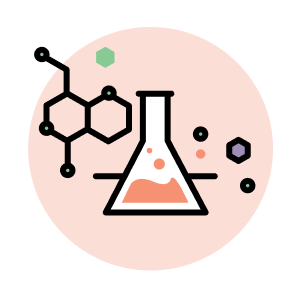Focus area SUBSTANCES
Hazardous substances in IT products — and how to avoid them
Hazardous substances used in IT products present a wide variety of risks. Throughout the life cycle, products may release dioxins, halogens and other toxicants, which can persist in the natural environment and the human body.
As legislation often lags behind, the only way to reduce risks is to collect information and scientifically assess substances before they are used.
Hazardous substances in IT products are part of a global issue that affects all industries. At the heart of the problem is a huge lack of information and knowledge about the hazard levels connected to the huge amounts of substances in circulation. More than 350,000 substances are available on the market, and only around 1% have been risk-assessed. Chemical pollutants can be found from the Arctic to Antarctica, and some of these substances are highly persistent in the environment. In 2022, researchers noted that the safe planetary boundary for pollutants, including plastics, has been exceeded. This situation poses a risk to the stability of natural systems on our planet.
The presence of hazardous substances in IT products is linked to various sustainability risks. These risks encompass a range of health issues, particularly for workers in factories and throughout the complex supply chain. Known health risks include hormone disruption, memory and attention disorders, obesity, fertility problems, and cancer. Additionally, environmental harm occurs when e-waste is not disposed of properly.
Legislation lags behind
Regulatory developments of substances lag far behind as it is a slow process compared to the fast-moving chemicals industry. Once a substance is found to be of high risk, restrictions are often regional and in countries where they are not yet banned, substances can continue to be used. Another big problem is unsafe substitutions — banned substances often are replaced with similar ones, that may pose the same or even greater risks.
A hindrance to circularity
Hazardous substances also hinder circular IT management. Contaminated materials cannot be responsibly recycled and reused in new products and risk being incinerated or discarded, adding to the enormous e-waste problem and the loss of valuable resources.

Substances in IT manufacturing
Flame retardants
Prevent products from catching fire.
Plasticizers
Make plastics in cables durable and flexible.
Stabilizers
Stop degradation and make materials more durable.
Process chemicals
Are used in manufacturing, e.g. to clean products.
Heavy metals
May be included in plastics, paints and components.
Assessing substances before use
Hazardous substances criteria have been part of TCO Certified since 1995. At first, we used the same strategy as everyone else and focused on banning substances known to be hazardous. However, due to the large majority of unknown substances on the market, this approach proved to be inefficient. Instead, we decided to consider all non-assessed substances a high risk until they have been scientifically tested and approved as safer alternatives.
With TCO Certified, information about each substance is gathered, including both public information and confidential information owned by the chemical manufacturer. An independent toxicologist then evaluates the substance’s potential impact on human health and the environment. If the substance is found to be a safer option, it is added to TCO Certified Accepted Substance List and can be used in certified products. The list is dynamic and can be updated based on new scientific findings. It is also publicly accessible, which can help accelerate the transition to safer alternatives across all industries.
Three ways of reducing risks
1. Include criteria for safer chemicals in procurement.
2. Use products longer to avoid unnecessary chemical consumption.
3. Ensure products are handled safely at end-of-life.
Three ways of reducing risks
1. Include criteria for safer chemicals in procurement.
2. Use products longer to avoid unnecessary chemical consumption.
3. Ensure products are handled safely at end-of-life.
What buyers and users can do
Safer substances is a complex field that requires both expertise and industry connections to navigate effectively. The chemical industry is fast-moving and often lacks transparency. Legislation lags far behind, primarily focusing on banning substances known to be hazardous while the hazard level of most available substances remains unclear and unrestricted. With thousands of chemicals currently available for commercial use, it becomes nearly impossible for purchasers to know what a product contains and reduce potential hazards.
As a buyer, the most important step you can take to avoid hazardous substances is to include clear requirements in procurement, by specifying TCO Certified, for example. Additionally, plan for longer procurement cycles and ensure that the products you source are used for their full lifespan. This approach helps minimize unnecessary consumption of hazardous substances and other resources. Once products have reached the end of their usable life, they should be safely recycled, to prevent harmful substances from leaking into the environment and harming human health.
TCO Certified helps you avoid risks
Criteria in TCO Certified are focused on improving chemical safety in both production and products. We gradually expand our criteria to cover new chemical types and product parts, focusing on those with high risk, and where our criteria can have the biggest impact. Step by step, we will cover more levels in the complex IT product supply chain, to ensure that many more harmful substances are replaced with safer alternatives.
To protect factory workers, we include process chemicals in our priority categories of chemicals and require that Personal Protective Equipment (PPE), training and exposure monitoring are provided.
Purchasers can specify certified products with confidence, knowing that substances are verified as safer for workers and the environment. Safer chemicals also mean that products and materials are more recyclable.
Substances criteria in TCO Certified





